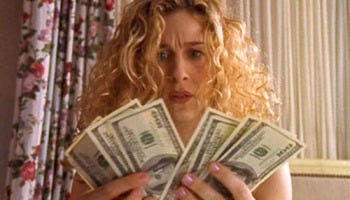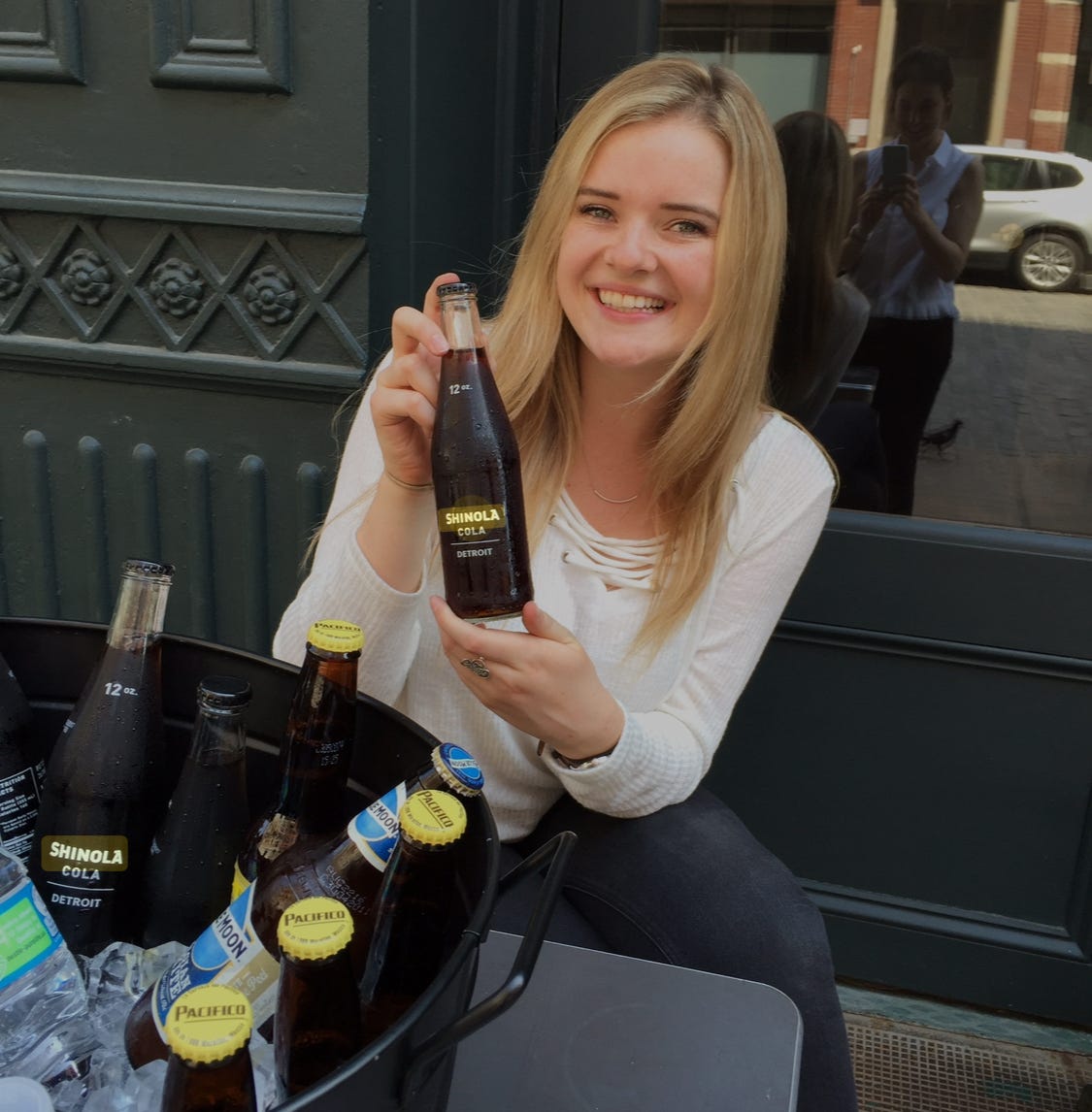Last week, I wrote about resentment. Or at least I thought I did. Really, what I wrote about was unpaid work.
Unpaid work is an insidious, prevalent force in many industries (I know firsthand from the creative industry, but many comments on my post came from people in social work, healthcare, and advocacy, among others).
No matter what industry you’re in, it does have an impact. As
wrote, “It always puts me in a shitty mood when I can really only blame myself for not really being good at ‘boundaries’… whatever those are.”For me, my lack of boundaries has come from not believing in the value of my work.
My past tendency to take on low-paying opportunities came from a scarcity mindset. I was petrified, when I started as a no-name, never-been-in-a-newsroom-aspiring-writer three years ago, that I would never get another opportunity.
So I took anything that came my way.
I have said yes to things I didn’t want to do and rates that were extremely low because I didn’t think there would be another one.
I can tell you now that there will always be another opportunity.
And saying yes to the wrong things, blocks the time, energy, and space to take on the right opportunities.
It’s also worth noting that over these three years, I have gotten very clear that I will never be able to live from writing. I will always have another job.
As sad as it sounds, I actually find it liberating.
I choose what I want to write. (In the past, if it didn’t get placed, I wouldn’t be able to write it. But from now on, I am going to write it here!)
My beat is simply, stories that I want to write.
Living in Spain and Scotland has helped me pattern match trends like the extra-long birthday cake I saw in Spain that turned into the piece about wedding cakes I wrote for NYT, or seeing firsthand how Scandinavian and Scottish interiors have converged, which I covered for Vogue.
I like to write stories that are financially empowering, such as this piece about how to have a wedding at home, or what 9 millennial homeowners wish they knew before buying a house, both for Architectural Digest, or how to have a wedding for less than $10,000, which I wrote for Vogue.
I try to find stories of exceptional talent that aren't being told, which has made having a Scottish design beat so fun and rewarding, and I try to, wherever I can, tell stories of female entrepreneurship.
How do I know I can never live from freelance writing?
Well, I have tried.
I have published 18 articles over the past three years.
The most I’ve ever been paid was 650 GBP ($817), and the least I’ve been paid was $150 (not including the writing I've done for free or didn’t get paid for). Most often, I am paid between $250-400 for a 800-1,200 word article.
Obviously, someone cannot live on that. Averaged over the three years I’ve been writing, that would be $2,500 per year. And that’s me trying my absolute hardest to get as much published as I can.
So of course, I will always have a full-time job alongside writing.
But this actually isn’t anything new. I have never been a full-time writer.
In reality, I’ve spent the majority of my career in finance, working in sales and trading at Goldman Sachs in New York City, and then as the COO of a technology start-up.
It was always my dream to be a writer, but I saw early on what the financial reality of creative could be and took another path.
Stay with me as I take a brief aside into my career history…
Growing up, I always intended to work in writing in some way (I wanted to be a book editor so I could read all the time).
My first internship was in PR at Shinola in New York City in 2016. I worked part-time in their PR office (with amazing people like
!) The rest of the time, I spent on the sales floor, selling watches.Because the Shinola office and showroom is based in Tribeca, right across from Citi Bank, and within strolling distance of Goldman Sachs, we got our fair share of bankers coming in on their lunch breaks and buying watches—or at least, acting like they were going to.
So there I was, 19-years old, saving up my PR paychecks and eating beans and microwaved sweet potatoes, feeling like I was on the wrong side of the transaction–I wanted to be buying the watches, not selling them.
And after a seemingly insignificant interaction, a Goldman Sachs second-year analyst trying to correct me on the pronunciation of the brand where I was spending my every waking minute (he called it Shin-ola, and it’s Shine-ola, as the brand used to be a shoe shine polish) and telling me that I couldn’t ever get a job at a place like Goldman, I called my mom and told her that I was going to work at Goldman Sachs. (Yes, a career built on spite!)
To this day, I sometimes wonder if it was the easy way out.
Yes, it was about financial independence—and the finances of present day me thank past me–but I wonder if there was fear there too.
If I had applied to an internship at Condé Nast and they had rejected me, would that have crushed my soul?
(Failing at banking was less scary, because well, I never really saw myself as a banker).
Looking back, I actually wrote a ton while working in finance. It was corporate writing, weekly markets recaps and stock pitches, and when I moved into a Chief of Staff function, drafting memos and LinkedIn posts.
I didn’t have any creative control over what I was writing, but I was being paid enough to not mind.
So this brings me to my tried-and-true methodology of how I think about work, where financial compensation is on the Y-axis and creative control is the X-axis.
The goal is, of course, to have complete creative control over your work and get paid a ton of money to do so.
There are many examples of people doing that—one might even say that successful writers on Substack have gotten as close to that as one could dream possible.
Adjacent to that top right goal state are two decent outcomes for work.
The top left is “lots of money” but “no creative control.” I use my job in finance as an example of that. It was great for a period of time and I don’t regret it. I know a lot of people who have a stable 9-5 job and are able to fulfill their creative expression outside of work.
The other good-not-great work outcome is the bottom right with “full creative control” but “little to no money.” This is worse, in my opinion than the other state, and is okay in moderation, and for the right projects. If they are accretive to you, if they light your soul on fire, if they feel like magic–those passion projects can be amazing.
I have done MANY things for little or no money just because I wanted to do them. And I don’t regret them, because they brought new people into my life, opened a door that I needed to open, or helped me have an experience that I wouldn’t have ever had.
But, they must be done in moderation or they lead to burnout.
So then, this brings us to the worst position, the bottom left with “no creative control” and “no money.”
THIS, must be avoided at all costs. And this is the state in which resentment emerges.
The trick of a portfolio career is to mix-and-match the right projects so you can have both financial independence and creative fulfillment. Not every project will light my soul on fire, but I will continue to prioritize financial freedom above all else, at least for now.
That all being said, my perfect portfolio mix is still very much a work-in-progress. But that pursuit is made infinitely easier by having transparent conversations about finances—thank you to everyone who has reached out or commented on the topic.
To many more!
Let me know what you think in the comments. And if any of this has resonated with you, please consider sharing this article with a friend.










YES!!!!!
i want to hear more about how you’re building your portfolio career!! this is my new obsession